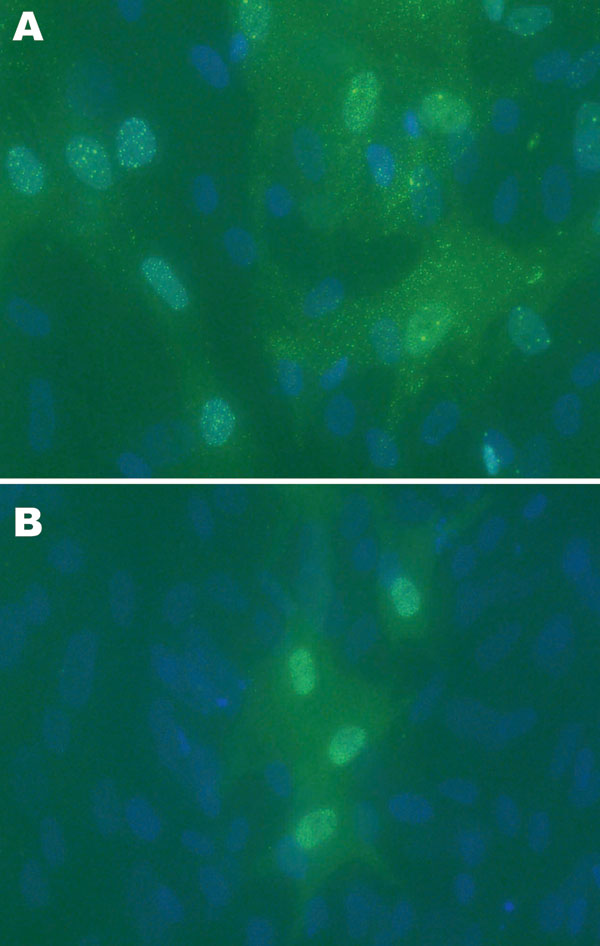Volume 16, Number 3—March 2010
Research
Use of Avian Bornavirus Isolates to Induce Proventricular Dilatation Disease in Conures
Figure 2

Figure 2. A) Avian bornavirus (ABV)–infected duck embryonic fibroblast (DEF) cell culture 6 days after injection with hindbrain tissues from an African gray parrot with confirmed proventricular dilatation disease (AG5) and staining by an indirect immunofluorescence assay for ABV N-protein. Speckled immunofluorescence is typical of bornavirus infection. Original magnification ×40. B) DEFs 3 days after injection with forebrain from a yellow-collared macaw with confirmed proventricular dilatation disease (M24). Nuclear and cytoplasmic fluorescence in DEFs stained by immunofluorescence assay for ABV N-protein. Original magnification ×40.
Page created: December 14, 2010
Page updated: December 14, 2010
Page reviewed: December 14, 2010
The conclusions, findings, and opinions expressed by authors contributing to this journal do not necessarily reflect the official position of the U.S. Department of Health and Human Services, the Public Health Service, the Centers for Disease Control and Prevention, or the authors' affiliated institutions. Use of trade names is for identification only and does not imply endorsement by any of the groups named above.